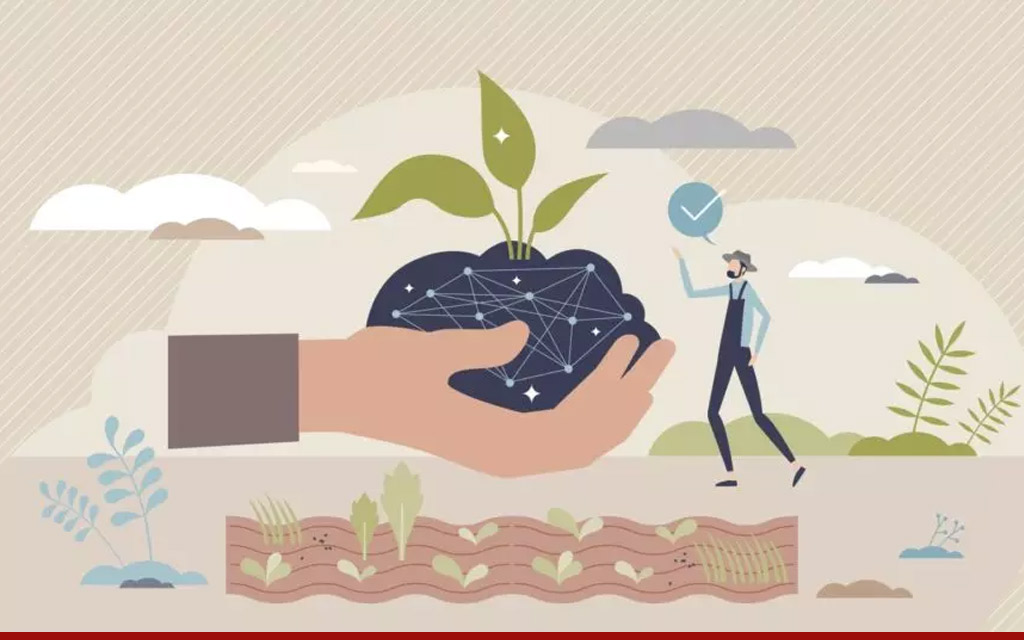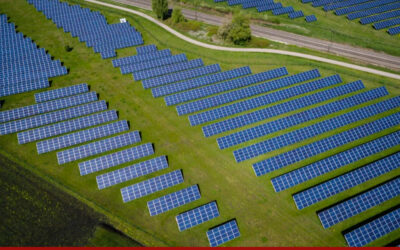Here’s a mind-blowing number: Roughly 2% of people in the United States grow the food that the other 98% of us consume. Novel agtech is changing what it means to farm.
Here’s a mind-blowing number: Roughly 2% of people in the United States grow the food that the other 98% of us consume. While farm owners continue to be a shrinking population, the U.S. population is still growing, albeit at a slower pace.
The net result? We’ve got more mouths to feed and fewer farmers to farm. I spent two days at VISION Conference, an agtech conference that drew leaders from across the agricultural ecosystem to tackle these problems with a tech-eye view. As expected, they talked about weather a lot, but more interesting to me were the conversations about the potential of the metaverse, digital twins, and cloud computing.
Peter Wells of Elevated Foods shared that as an agtech startup he visits farms that can occupy thousands of acres and do $500 million plus in revenues, but are often managed by 20 employees or so, most of them administrators. And workers are hard to come by.
Perhaps you’ve heard of GEM, an acronym used by the agricultural industry that stands for Genetics/Environment/ Management–a trio of forces that dominate the agrarian mindset. According to John Teeple Global Partner Leader, Agriculture, Amazon Web Services, the GEM model is shifting its allegiance.
Science and biology, he says, have already pushed genetic modifications, like the creation of disease-resistant, hardier, and more bountiful crops, to the max. The environment, as we’ve seen over the past few years, is anything but predictable and manageable. Floods and forest fires in California, tornadoes in the midwest, and disappearing rivers and lakes have all destabilized production. “And so,” says Teeple, “we’re going to increasingly depend on management, learning to do more with less and under more extreme conditions.” Coupled with a labor shortage on farms, these factors coalesce into a perfect storm, so to speak. Farmers are hoping technology can come to the rescue.
The heroes of tomorrow’s farming success stories may not be the “go it alone” stereotype of the tough American farmer, but nerdier high-tech farmers who can manage autonomous vehicles, AI, IoT devices, and digital twin modeling. This new era of agriculture will require lots and lots of cloud storage. Farmers are making fast friends with data.
“We’ve created more data in the past three years than in all of history,” says Teeple. “And the amount of data is likely to triple by 2025.” Sensors in the field measure and track everything from soil samples to irrigation needs. Sensors built into machinery can recognize a weed from a wheat stalk, and distinguish a beneficial insect from a crop destroyer.
John Deere was the darling of the CES 2023 Ag 4.0 exhibit floor, showcasing smart machines that help farmers maximize crops while minimizing labor. The industry giant’s new See and Spray technology uses 36 cameras built into its tractors that recognize weeds and apply just enough–but not too much–herbicide. John Deere says See and Spray has the potential to cut herbicide use by 77%.

A new “crop” of robotic machines handling tasks like weeding, tilling, and sowing are making their way to market. In farms all over the country seedlings are transplanted by machine; pesticides and fertilizers are dispensed by giant robots on wheels. Many estimate that a single machine could take the place of 30 employees (except in cases like hand-picking where robots don’t yet have the skills).
Image recognition can also detect the ripeness or the quality of a crop. Will a particular apple be good for eating or is it destined for applesauce? At CES 2023 a startup called One Third demonstrated how to test avocados and other perishables for ripeness and shelf life by inserting the fruit into a machine. The company hopes to cut down on food wastage with this technique.
Farmers are also moving towards using digital twins–virtual replicas of a farm that gather input from sensors and edge devices to predict and optimize things like crop rotation, water conservation, and irrigation practices. More and more we’ll see dashboard-driven agriculture increase yields and efficiencies. And modern farmers will need a different set of skills to match. With stints at Hitachi (digital twins), Ericsson (5G/IoT) and Microsoft (Cloud), Rob Tiffany, founder of Sustainable Logix, epitomizes this new farming ethos.
The Trouble with the Cloud
High tech farming in the cloud is far from a silver bullet. Ruggedization, cost, lack of broadband, and ineffective business models are just a few of the obstacles.
Most farms are in rural areas, far from the cell towers they need for good broadband reception. Buying private towers or satellites, while an answer for some larger farms is prohibitively expensive for most. High speed connectivity is essential. The community is hoping for satellites to help solve the problem.
IoT devices are another expensive outlay on the farm. Vulnerable to weather and prone to failure, the devices experience frequent malfunctions need regular replacement. The question of how many devices a farm needs to monitor operations is open for debate. One device per acre? One device per apple tree? Too much information creates as many issues for farmers as not enough.
Obsolescence is another issue, both in terms of expense and sustainability. When Farmer Joel bought a tractor that tractor was maintained and passed down from one generation to the next. “The high tech world is used to obsolescence after three of four years,” said McMcquire.
Image recognition is still inadequate. When, for example, a head of lettuce grows a green mold, it’s tough to know how many layers of mold it could have lying beneath. Intense sunshine distorts images and cloud cover can render satellite and drone images useless.
Connectivity between various devices and systems is another issue, with little agreement on the farming platform.
Climate Smart Crops
Sustainability and environmental preservation are increasingly top priorities for farmers. Vonnie Estes, President of the International Fresh Produce Assocation is passionate about the emerging area of agriculture called Climate Smart Crops. She says three factors distinguish agriculture that’s more climate-smart:
- Increased productivity and incomes. Farmers need to grow more, but also be able to earn more.
- Enhanced resilience and the ability to more quickly respond to environment and climate changes,
- Reduced emissions, mitigating the greenhouse effects.
Estes also sees a sharp increase in consumer awareness about where and how their products are farmed, and they are applying pressure on farmers to use forward-thinking techniques.
New business models are needed to ensure the cost of tech doesn’t put the onus on farmers to pick up the tabs. Universities need to start teaching high tech farming now. Family farm succession planning should include passing the farm along to someone who speaks tech. And if we’re to enjoy a future of stable food production, sustainable practices must be at the heart of all agricultural systems.




